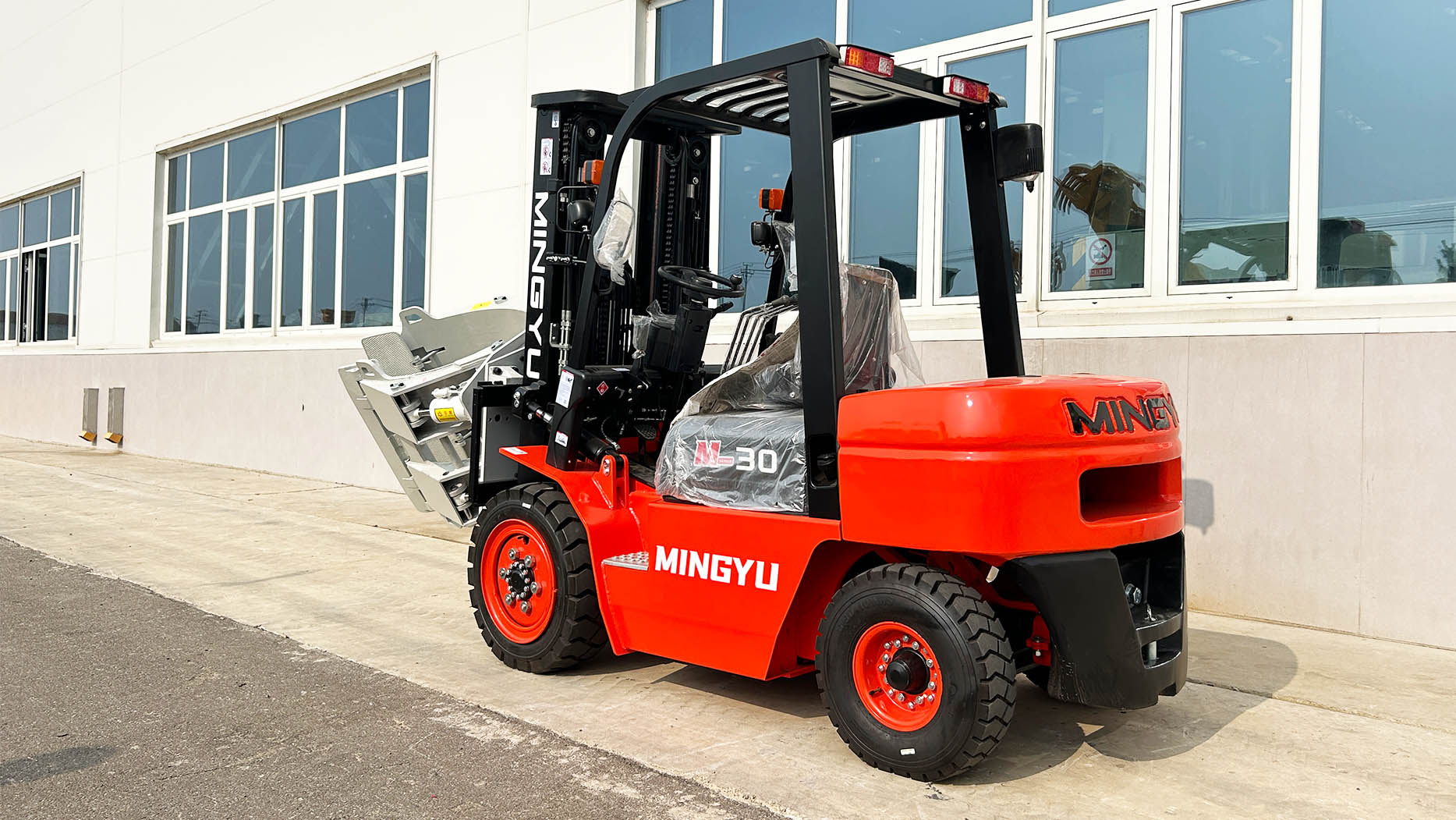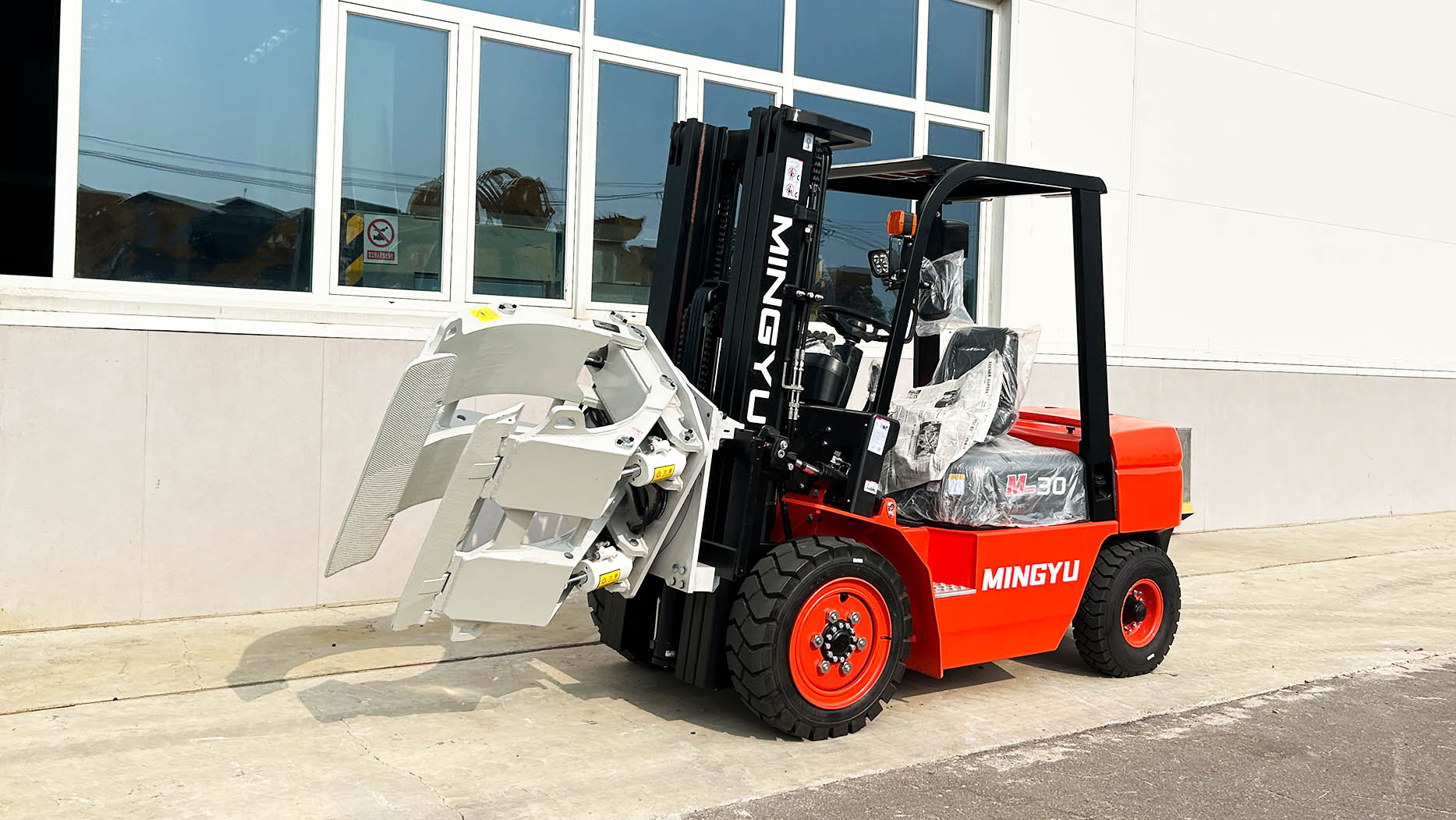When businesses consider investing in a new forklift, the initial purchase price is just one piece of the puzzle. A far more significant factor in the long-term total cost of ownership (TCO) is the ongoing expense of maintenance. The choice between an electric forklift and a diesel forklift profoundly impacts these costs, stemming from their fundamental differences in design, power source, and operational environment.
While diesel forklifts are lauded for their raw power and ruggedness in outdoor applications, electric forklifts are increasingly popular for their lower emissions, quieter operation, and often, their promise of reduced maintenance expenses. Understanding the nuances of what each type requires to stay operational is crucial for making an informed decision that optimizes your budget and uptime.
Understanding Maintenance Philosophies
The maintenance philosophy for each forklift type differs significantly due to their core technology:
Diesel Forklifts: These are complex mechanical machines. Their maintenance revolves around internal combustion engine care, fluid management, and robust component durability to handle heavy loads and often harsh outdoor conditions. This translates to more frequent, mechanically intensive tasks.
Electric Forklifts: These are simpler mechanically, relying on electric motors, batteries, and sophisticated electronic control systems. Their maintenance focuses on battery health, electrical connections, and fewer moving parts.

Maintenance Cost Breakdown: Diesel Forklifts
Diesel forklifts are robust workhorses, but their complexity means they require consistent and comprehensive maintenance.
Engine-Related Maintenance: This is the most significant cost driver for diesel models.
Oil and Filter Changes: Diesel engines generate more soot and operate at higher temperatures than gasoline engines, necessitating more frequent oil and filter changes (typically every 250-500 operating hours). This includes engine oil, oil filters, and fuel filters.
Air Filter Replacements: Crucial for engine health, especially when operating in dusty outdoor environments (common for diesel forklifts). Clogged filters reduce efficiency and can lead to engine wear.
Fuel System Maintenance: Requires regular checks of fuel injectors, fuel lines, and the fuel pump. Contaminated fuel can be a major issue, leading to costly repairs.
Cooling System Maintenance: Radiator cleaning, coolant flushes, and checks of hoses and pumps are essential to prevent overheating.
Spark Plugs/Glow Plugs: Replacement as part of tune-ups (for glow plugs in diesel engines).
Belts and Hoses: Inspection and replacement of serpentine belts, fan belts, and various hoses to prevent breakdowns.
Emissions System Maintenance (for modern diesels):
Modern diesel forklifts are equipped with Diesel Particulate Filters (DPF) and/or Selective Catalytic Reduction (SCR) systems requiring Diesel Exhaust Fluid (DEF).
DPF Cleaning/Replacement: DPFs collect soot and require periodic "regeneration" (burning off soot). If regeneration cycles fail, the DPF may need professional cleaning or, eventually, costly replacement.
DEF Consumption: While not strictly maintenance, the cost of DEF fluid adds to operating expenses for SCR-equipped models.
Other Mechanical Components:
Transmission Service: Fluid and filter changes are necessary, though less frequent than engine oil changes.
Brakes: More prone to wear in harsh, outdoor environments with heavy loads, leading to more frequent brake pad/shoe replacement and system checks.
Tires: Diesel forklifts often use large pneumatic tires that can be expensive to replace, especially if they operate on abrasive surfaces. Punctures are also a risk.
Hydraulic System: While robust, hydraulic hoses and seals can degrade and leak, requiring replacement.
Estimated Annual Maintenance Costs for Diesel Forklifts: Generally range from $1,500 to $4,000+ per year, depending on usage intensity, forklift age, and operating conditions. Heavy-duty models or those in extremely challenging environments can incur higher costs.

Maintenance Cost Breakdown: Electric Forklifts
Electric forklifts typically boast lower mechanical maintenance costs due to their simpler drivetrain, but they have a unique cost driver: the battery.
Battery-Related Maintenance (The Primary Cost Factor):
Lead-Acid Batteries: Require regular watering (distilled water), cleaning of terminals to prevent corrosion, and periodic equalization charges. Improper battery care is the fastest way to shorten battery life, leading to a very significant replacement cost.
Lithium-Ion Batteries: Virtually maintenance-free beyond basic cleaning and connection checks. This significantly reduces labor costs associated with battery care.
Battery Replacement: This is the single largest potential maintenance-related expense for an electric forklift. Lead-acid batteries typically last 5-7 years (1,500-2,000 cycles) with proper care, while lithium-ion batteries can last 8-10+ years (3,000-5,000+ cycles). The cost of a new battery can be 20-30% (or more) of the original forklift purchase price.
Charger Maintenance: Chargers need to be maintained, ensuring proper voltage output and connection integrity.
Electric Motor Maintenance:
Pros: Electric motors have very few moving parts compared to internal combustion engines. This means no oil changes, spark plugs, or exhaust systems. Maintenance is typically limited to visual inspections, checking bearings, and ensuring electrical connections are secure. They are generally extremely reliable and long-lasting.
Cons: While rare, motor failures can be expensive to repair or replace.
Electronic Control Systems:
Modern electric forklifts rely heavily on sophisticated electronics. While durable, these can be sensitive to moisture, dust, or power surges. Diagnostics and repairs require specialized technicians and software.
Hydraulic System:
Similar to diesel, hydraulic fluid and filter changes are needed, though potentially less frequently than a diesel due to potentially less strenuous hydraulic demands (depending on application). Hoses and seals still need inspection.
Brakes:
Often benefit from regenerative braking, which can extend the life of mechanical brake components. However, mechanical brakes still require inspection and eventual replacement.
Tires:
Typically use cushion or solid pneumatic tires, designed for indoor, smoother surfaces. These generally last longer and are less prone to punctures than the tires on rough-terrain diesel models.
Estimated Annual Maintenance Costs for Electric Forklifts (excluding battery replacement cost averaged over years): Generally range from $500 to $2,500 per year. This is often cited as significantly lower than diesel, sometimes as little as one-third.
 Direct Cost Comparison and Total Cost of Ownership (TCO)
Direct Cost Comparison and Total Cost of Ownership (TCO)
When comparing maintenance costs, it's crucial to look beyond annual figures and consider the TCO over the entire lifespan of the forklift.
Upfront Cost: Electric forklifts often have a higher initial purchase price, primarily due to the cost of the battery and charger.
Fuel Costs: Electric forklifts almost universally have lower "fuel" (electricity) costs compared to diesel forklift fuel consumption, especially with rising diesel prices. This is a major long-term saving.
Maintenance Labor: Electric forklifts typically require fewer hours of labor for maintenance tasks.
Parts Cost: Fewer moving parts generally mean fewer consumable parts to replace on electric models, excluding the battery.
Battery Replacement: This is the wild card for electric. While annual maintenance may be low, a battery replacement every 5-10 years represents a substantial one-time cost that must be factored into the overall TCO.
Overall Trend: Many studies and real-world data suggest that electric forklifts often have a lower total cost of ownership over their lifespan compared to diesel forklifts, despite the higher upfront investment. The savings primarily come from significantly lower energy costs and reduced mechanical maintenance.
The Role of Manufacturers (e.g., MYZG / MINGYU,)
Manufacturers like MYZG and MINGYU, (often representing various Chinese forklift and heavy equipment manufacturers like Mingyu Group) are significant players in both the diesel forklift and electric forklift markets.
Improving Quality: These brands have made substantial progress in recent years, producing more reliable and durable machines in both categories. Their maintenance requirements, while potentially differing slightly from premium Western brands, generally follow the same principles outlined above.
Accessibility: MYZG / MINGYU, models often offer a more accessible entry point regarding initial purchase cost, which can be attractive to businesses. However, it's vital to factor in the availability and cost of parts and local dealer support for long-term maintenance, especially in your specific region. A strong local dealer network is crucial for minimizing downtime for any brand.
Maintenance Schedules: Regardless of brand, always adhere to the specific maintenance schedules outlined in the operator's manual for your MYZG or MINGYU, forklift.
Key Takeaways for Maintenance Cost Management
Application is King:
Diesel: If your operation is primarily outdoors, involves heavy-duty, continuous work, and emissions can be managed, a diesel forklift is appropriate. Budget for more frequent, mechanically intensive maintenance.
Electric: If your operation is indoors, values low emissions, quiet operation, and you have access to proper charging infrastructure, an electric forklift is ideal. Focus your maintenance budget and attention on battery health and proper charging protocols.
Preventative Maintenance Pays Off: For both types, diligent adherence to manufacturer-recommended preventative maintenance schedules is the single best way to reduce unforeseen repair costs, extend lifespan, and maintain efficiency. Ignoring small issues inevitably leads to larger, more expensive problems.
Operator Training: Proper operation can significantly impact wear and tear. Training operators on smooth driving, correct loading techniques, and appropriate idling/charging habits will reduce maintenance needs.
Evaluate TCO, Not Just Purchase Price: When budgeting, look at the full lifecycle costs, including fuel/electricity, planned maintenance, potential major repairs (like battery replacement for electric), and estimated downtime.
In conclusion, while diesel forklifts are built to endure rugged conditions, their internal combustion engines and complex mechanical systems generally demand higher and more frequent maintenance costs. Electric forklifts, with their simpler electric motors, offer significantly lower mechanical maintenance, but their overall long-term cost is heavily influenced by the lifespan and replacement expense of their battery. For a well-managed fleet, whether from leading brands or from value-driven options like MYZG /MINGYU, understanding these maintenance nuances is fundamental to ensuring your forklifts remain efficient, safe, and cost-effective over their operational life.
Post time:Jul.14.2025
